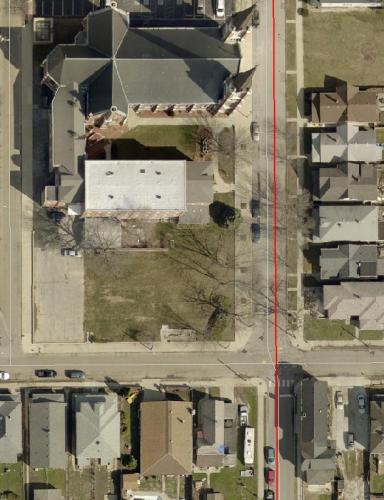This morning I was cleaning up some files on my work computer, and I came across a map that I found of the old streetcar network from 1923. I linked this image back in 2008, but it’s worth revisiting again:

At my workplace, I was able to work on this file a little bit, and I created a shapefile of the network as faithfully as I could:

Basically, if I was unsure about the actual routes, I’d follow the roads in places where I could find historic mixed-use buildings in the city. The businesses located in these buildings often relied on their locations next to the streetcars, so I figure many of these are safe assumptions. Here are some examples of routes where I took some liberty in placing the lines through educated guesses. If you have personal knowledge that any of these are incorrect, please let me know in the comments:





Many of these structures pictured above are still standing almost a hundred years later. This lends credence to the argument that traditional neighborhood planning can last for generations. What are we building today that will be worth investing 100 years into the future?
Update: Due to request, here is what the network looks against the current IndyGo bus network:

It would be interesting to overlay the Indygo map on this map to see similarities and differences…..
This can be done. Let me work on this and I’ll put it in this post.
Done.
It is not too surprising that the best transit neighborhoods today are mostly the same as the best transit neighborhoods 100 years ago. The built form hasn’t changed.
That is true, but I think it is only half the story. The other half is that the part that was destroyed was not necessarily transit dependent – the downtown core. Look where most of the worst damage was done by interstates and you’ll see downtown after downtown cut off from cultural districts, waterfronts, and other interesting places nearby.
Most of these transit oriented neighborhoods managed to dodge the road bullet. Probably not for any other reason than math. Interstates probably only cover <0.1% of Marion County (maybe way less), so most were missed or bypassed. Downtowns, where the highways converged or had to go around, were not so lucky.
Hi Kevin,
I am doing some analysis of the IndyGo system and would love to use that shapefile you mentioned for reference.
Thanks, Phillip